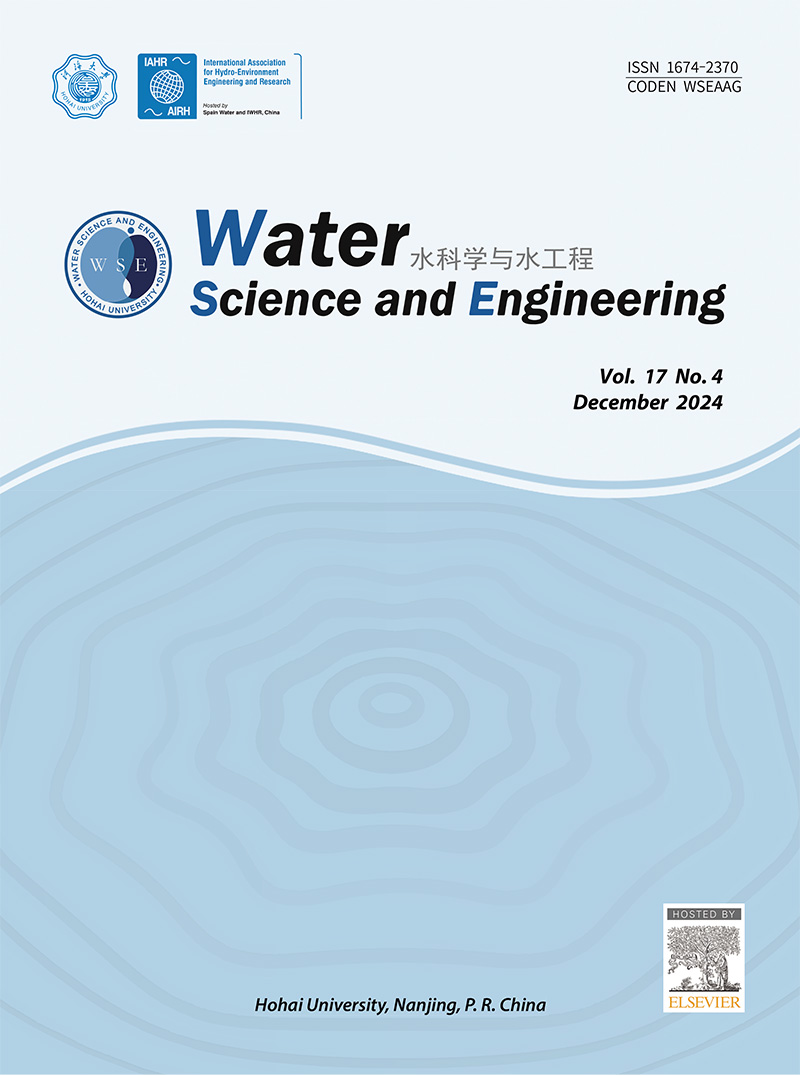Performance evaluation of downflow hanging sponge–upflow sludge blanket system for Oreochromis niloticus–Brassica oleracea aquaponic system
IF 4.3
Q1 WATER RESOURCES
引用次数: 0
Abstract
Maintaining low nitrate concentrations in aquaponic systems is crucial for improving water quality and maximizing the growth efficiency of fish and vegetables. Downflow hanging sponge (DHS) and upflow sludge blanket (USB) reactors have shown potential for wastewater treatment, but their use in aquaponic systems is relatively underexplored, particularly for overall performance and efficiency. In this study, a DHS reactor was coupled with a denitrifying USB reactor in an aquaponic system comprising Nile tilapia (Oreochromis niloticus) and kale (Brassica oleracea L. var. acephala DC). The USB reactor achieved a nitrate removal rate of 80.8% ± 20.5%. The specific growth rate of tilapia was 6.11% per day from day 16 to day 30. On day 45, kale growth achieved stem lengths of (4.1 ± 1.2) cm, root lengths of (12.2 ± 6.0) cm, and leaf counts of (6.3 ± 2.0) leaves per plant. Changes in the microbial communities within the reactors positively contributed to denitrification, resulting in a nitrogen utilization efficiency of 88.3%. The DHS–USB aquaponic system effectively maintained optimal water quality and stable parameters (pH, dissolved oxygen, and temperature). It regulated ammonia levels well and achieved 80.8% ± 20.5% removal rates for nitrite and nitrate after day 10. Microbial analysis highlighted significant shifts in the microbial communities within the DHS and USB reactors, underscoring their critical roles in nitrification and denitrification. Therefore, the DHS–USB aquatic system has the potential to improve agricultural production efficiency and promote sustainable development.
下流式悬挂海绵-上流式污泥毯系统在尼罗鱼-甘蓝水共生系统中的性能评价
在水培系统中保持低硝酸盐浓度对改善水质和最大限度地提高鱼和蔬菜的生长效率至关重要。下流悬挂海绵反应器(DHS)和上流污泥毯反应器(USB)已经显示出废水处理的潜力,但它们在水共生系统中的应用相对来说还没有得到充分的探索,特别是在整体性能和效率方面。在本研究中,在尼罗罗非鱼(Oreochromis niloticus)和甘蓝(Brassica oleracea L. var. acephala DC)组成的水共生系统中,将DHS反应器与反硝化USB反应器耦合。USB反应器的硝酸盐去除率为80.8%±20.5%。第16 ~ 30天罗非鱼的特定生长率为6.11% / d。第45天,羽衣甘蓝的茎长为(4.1±1.2)cm,根长为(12.2±6.0)cm,单株叶片数为(6.3±2.0)片。反应器内微生物群落的变化对反硝化有积极的促进作用,氮利用效率为88.3%。DHS-USB水培系统有效地保持了最佳水质和稳定的参数(pH、溶解氧和温度)。对氨氮有较好的调节作用,第10天对亚硝酸盐和硝酸盐的去除率达到80.8%±20.5%。微生物分析强调了DHS和USB反应器内微生物群落的显著变化,强调了它们在硝化和反硝化中的关键作用。因此,DHS-USB水产系统具有提高农业生产效率、促进可持续发展的潜力。
本文章由计算机程序翻译,如有差异,请以英文原文为准。
求助全文
约1分钟内获得全文
求助全文
来源期刊

Water science and engineering
WATER RESOURCES-
CiteScore
6.60
自引率
5.00%
发文量
573
审稿时长
50 weeks
期刊介绍:
Water Science and Engineering journal is an international, peer-reviewed research publication covering new concepts, theories, methods, and techniques related to water issues. The journal aims to publish research that helps advance the theoretical and practical understanding of water resources, aquatic environment, aquatic ecology, and water engineering, with emphases placed on the innovation and applicability of science and technology in large-scale hydropower project construction, large river and lake regulation, inter-basin water transfer, hydroelectric energy development, ecological restoration, the development of new materials, and sustainable utilization of water resources.
 求助内容:
求助内容: 应助结果提醒方式:
应助结果提醒方式:


